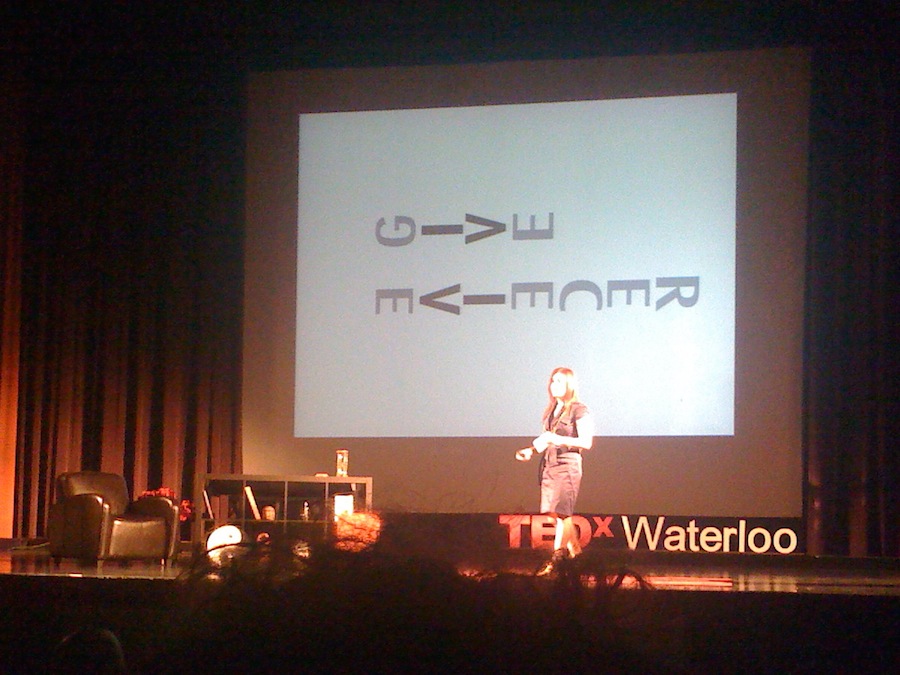
Wow! That was amazing!
TEDxWaterloo, on Thursday February 25, was even better than my already high hopes for it had led me to expect. The ambience at the Gig Theatre was great, the speakers were inspiring and the conversations I had were a treat. While the topics and styles for the talks were diverse they all related, even if loosely, to the overall theme of the event, Tomorrow Started Yesterday. While I got something out of each talk, highlights for me included Terry O’Reilly’s musings on friction, Paul Saltzman’s highly personal yet somehow epic reflections on life, Caroline Disler’s dissection of the foundations of what we call Western Civilization, and Madhur Anand’s exploration of the meaning of green.
Conversations were great too. I ended up chatting a fair amount with a student from the university of Waterloo about Bruce Springsteen, of all things. He’s a huge a fan, and said that he had never really met another fan before. I never expected to be weighing the merits of the 1978 Cleveland Agora show at TEDxWaterloo, but that’s the magic of the encounters that the event facilitates!
There were a few glitches, including a late start due to technical problems with getting the streaming video working and a crowded food area during the first break. These, for me, felt minor and in no way diminished the overall experience of the event. My only regret is that I didn’t make it to the after-party.
I left the theatre energized, enthused, and engaged. Congratulations, and thanks, to the folks who put this on. Outstanding!
Finally, I’ll leave Amy Krouse Rosenthal with the last word or, more precisely, the last seven words to wrap up this report:
Make the most of your time here.
